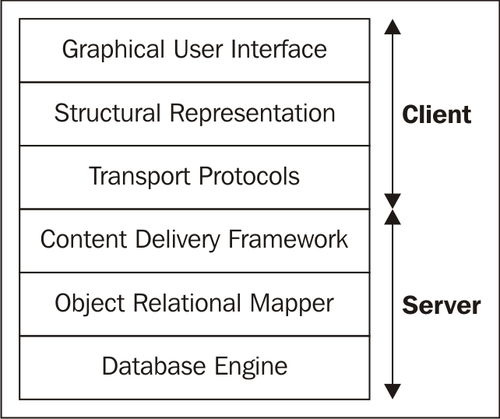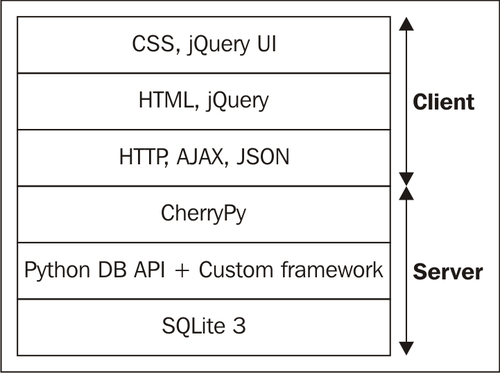If you take a close look, you will see that none of it is rocket science, the most it takes is common sense and attention for detail, and in every chapter, we highlight the relevant issues in a straightforward language where it is relevant. Remember that this is a practical book, there will be many working examples that are examined in close detail and we won't inundate you with theory, but give you just enough to get things done.
At every step in the development process, ask yourself the following questions?
- What needs to be done? There is no need to work on all things at the same time, indeed this is practically impossible. Allow yourself to form a high level idea first and identify the components in the next level down. Don't get bogged down with details when the outline is not clear yet.
- Which components of the application are involved? Identify the specific components involved when you develop a piece of functionality. The whole idea of identifying layers and components is to be able concentrate on a limited part of the application when developing.
This might not always work perfectly, but it certainly helps in maintaining focus. For example, when developing parts of the presentation layer, you may find that additional content is needed that should be provided by the delivery layer. Instead of immediately switching focus to that delivery layer, it's often simpler to define what is needed and complete the part of the presentation layer you are working on.
- What are the requirements? There is no need to implement stuff that is not needed. This may sound obvious, but many developers nevertheless fall into this trap. It is tempting of course to design your code to be as flexible as possible but it takes a lot of time, and as requirements change, it is unlikely that it'll prove flexible enough. Instead, the effort is better spent on writing code that is easy to understand so that the inevitable changes in requirements take less time to process.
When asking those questions and given the choices we made in this chapter, it might be helpful to draw a new picture that illustrates the technologies we will use:

The different components between the server and client that together make up the web application can be pictured as a layered stack. For each layer, we have chosen one or a few technologies, as illustrated in the following diagram:

Each application we encounter will be based on this model, so it might help to refer to this diagram once in a while if you feel you have lost track.
After reading this book, you will be left with the feeling that writing good, useable web applications is maybe a little bit more involved than you might have thought at first, but that is certainly within the reach of even the smallest of teams. Armed with all the fresh knowledge and practical experience, you will not have to compromise on quality, not even in the smallest project.
